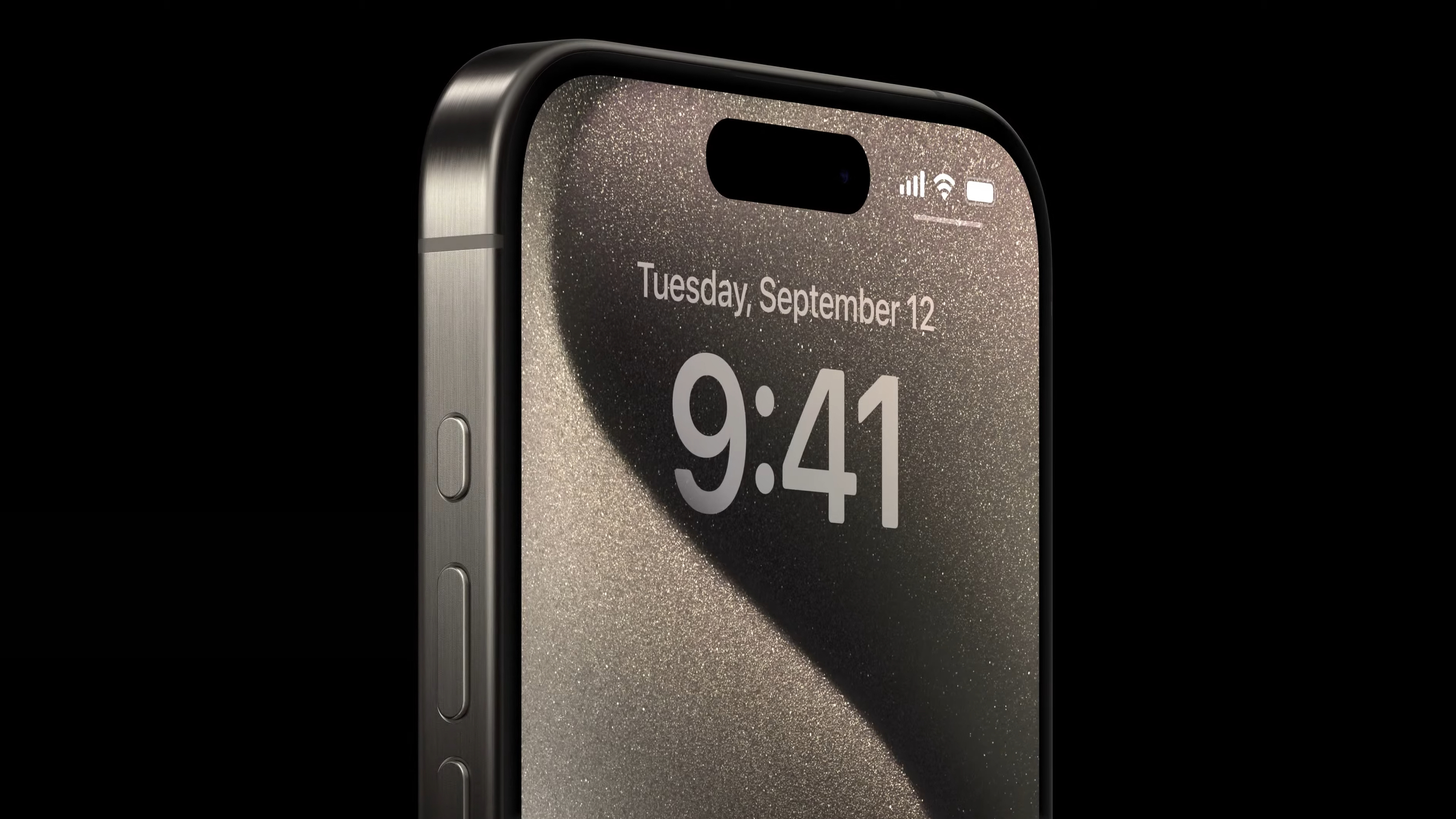
Apple's latest semi-flagship smartphone, the iPhone 15 Pro, is now officially available to buy, with the company having debuted the new device alongside the iPhone 15, iPhone 15 Plus and iPhone 15 Pro Max on September 12, 2023.
This 6.1-inch wonder boasts a titanium frame, a USB-C port, an all-new Action button and Apple's super-fast A17 Pro chipset, all of which ensures that the iPhone 15 Pro ranks among the best iPhones – nay, the best phones, period – money can buy in 2023.
For our full verdict on the iPhone 15, head over to our iPhone 15 review. You'll also want to check out our iPhone 15 Plus review, iPhone 15 Pro review, and iPhone 15 Pro Max review for a detailed look at the rest of Apple's iPhone 15 lineup.
What you need to know
- Starts at $999 / £999 / AU$1,849 for 128GB storage
- Rounded, titanium design
- Thinner display bezels
- New Action button
- USB-C connectivity
- Superfast A17 Pro chipset
- More advanced 48MP main camera
Model comparison
Apple released the iPhone 15 Pro alongside the iPhone 15, iPhone 15 Plus and iPhone 15 Pro Max. Here's how all four models compare:
| iPhone 15 | iPhone 15 Plus | iPhone 15 Pro | iPhone 15 Pro Max | |
|---|---|---|---|---|
| Dimensions: | 147.6 mm x 71.6 mm x 7.80 mm | 160.9 mm x 77.8 mm x 7.80 mm | 146.6 mm x 70.6 mm x 8.25 mm | 159.9 mm x 76.7 mm x 8.25 mm |
| Weight: | 171g | 201g | 187g | 221g |
| Display: | 6.1-inch OLED | 6.7-inch OLED | 6.1-inch OLED | 6.7-inch OLED |
| Resolution: | 2556 x 1179 pixels | 2796 x 1290 pixels | 2556 x 1179 pixels | 2796 x 1290 pixels |
| Refresh rate: | 60Hz | 60Hz | Adaptive 1-120Hz | Adaptive 1-120Hz |
| Chipset: | A16 Bionic | A16 Bionic | A17 Pro | A17 Pro |
| Rear cameras: | 48MP main, 12MP ultrawide | 48MP main, 12MP ultrawide | 48MP wide, 12MP ultra-wide, 12MP telephoto with 3x optical zoom | 48MP wide, 12MP ultra-wide, 12MP telephoto with 5x optical zoom |
| Front camera: | 12MP | 12MP | 12MP | 12MP |
| Storage: | 128GB, 256GB, 512GB | 128GB, 256GB, 512GB | 128GB, 256GB, 512GB, 1TB | 256GB, 512GB, 1TB |
iPhone 15 Pro release date and price
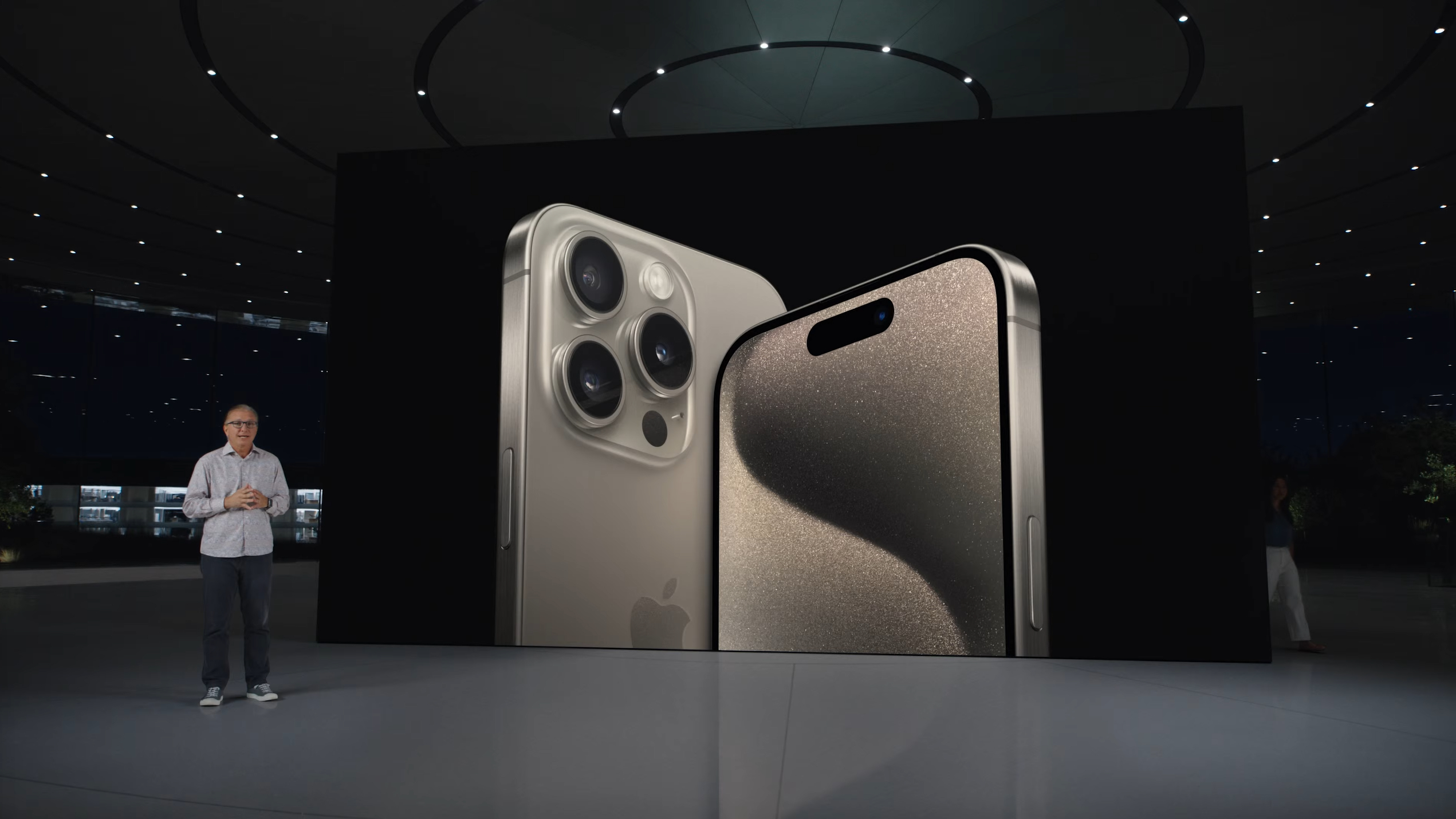
The iPhone 15 Pro was unveiled on September 12, 2023 at Apple's latest September event, with deliveries beginning on Friday, September 22.
The iPhone 15 Pro starts at $999 / £999 / AU$1,849 for the 128GB model, with that price rising to $1,099 / £1,099 / AU$2,049 for the 256GB model, $1,299 / £1,299 / AU$2,399 for the 512GB model and $1,499 / $1,499 / AU$2,749 for the 1TB model.
By and large, these are the same prices as we saw with the iPhone 14 Pro, which goes against rumors we'd heard about potential iPhone 15 Pro price rises. Still, this is still a very expensive phone, so head to our dedicated iPhone 15 Pro deals page for all the latest and best iPhone 15 Pro offers.
Get daily insight, inspiration and deals in your inbox
Sign up for breaking news, reviews, opinion, top tech deals, and more.
If you'd rather see those iPhone 15 Pro offers at-a-glance, we've collated the best iPhone 15 Pro deals currently live in the US and UK below.
US
- Apple: up to $650 off with a trade-in rebate
- AT&T: save up to $1,000 with a trade-in
- Best Buy: up to $1,000 off with a trade-in
- Boost Infinite: iPhone 15 Pro w/ unlimited data for $60/mo
- Verizon: $1,000 off iPhone 15 Pro with any iPhone trade
UK
- Sky Mobile :Get the iPhone 15 on Sky Mobile from £34 per month
- Vodafone: Get the iPhone 15 range from £18 per month on Vodafone EVO
- Vodafone: Save up to £821 with Vodafone Trade-in
- Apple: Trade in with Apple to save up to £715
iPhone 15 Pro colors
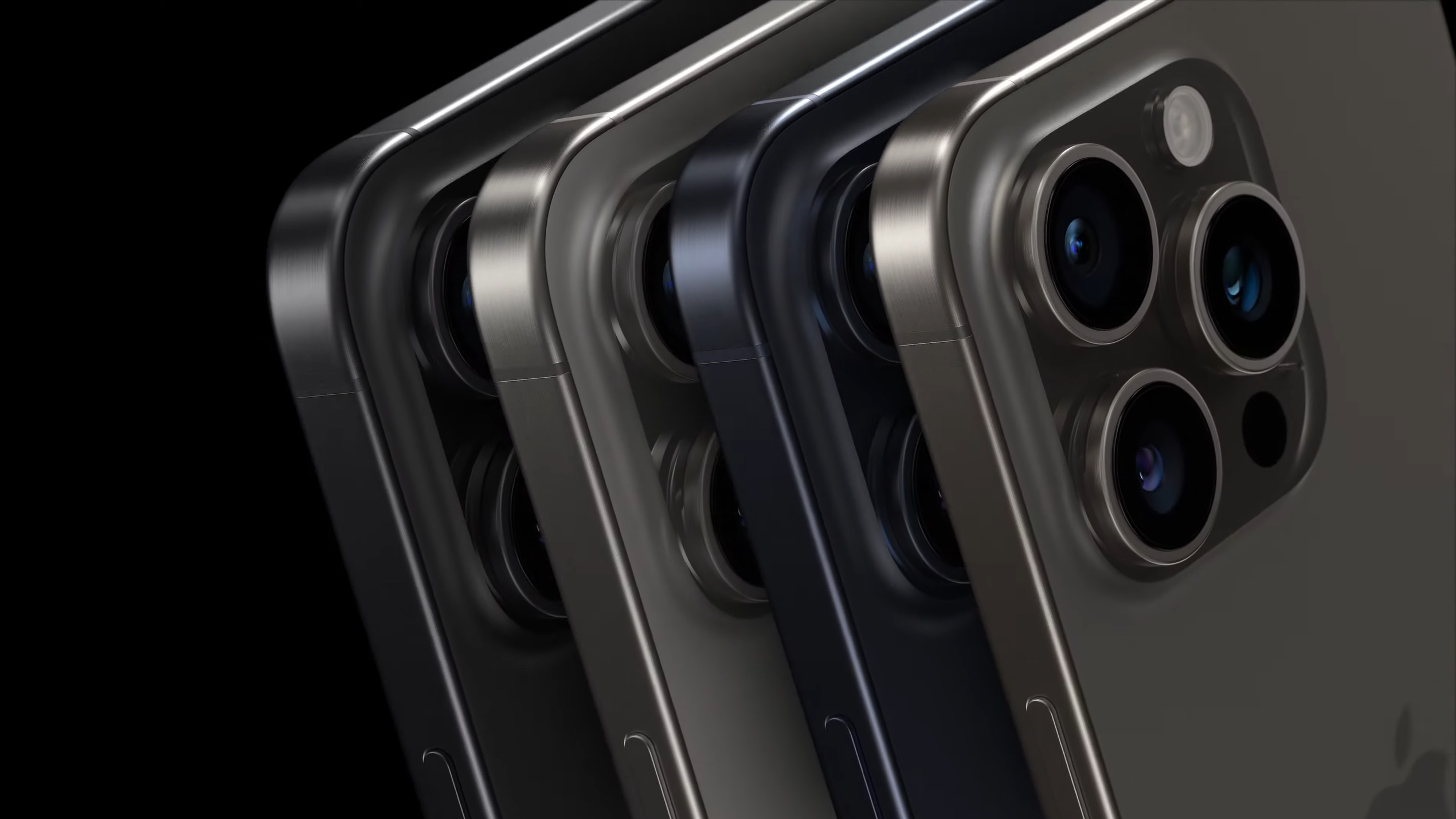
Apple is offering a variety of iPhone 15 colors at launch, though, as usual, the iPhone 15 Pro and iPhone 15 Pro Max are available in a different selection of shades to the standard iPhone 15.
This year's crop of Pro colors include black titanium, white titanium, blue titanium, and natural titanium, all four of which you can see in the image above.
iPhone 15 Pro design
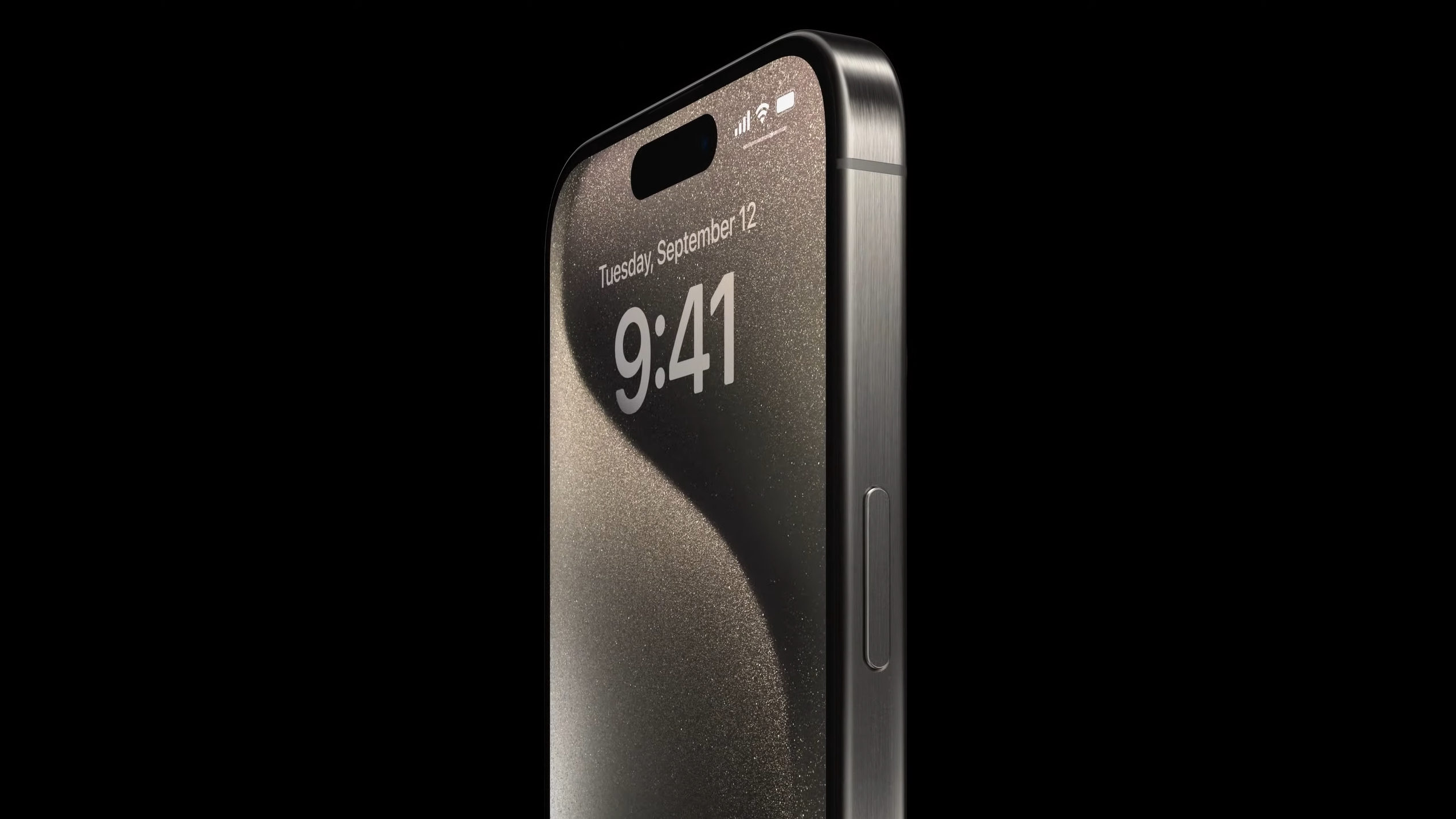
- Thinner bezels, titanium sides
- Mute switch replaced by Action button
Update (27/09): Since the release of the iPhone 15 Pro, many users have taken to the internet to report worrying overheating issues. It's thought that the phone's titanium design could be to blame for its poor cooling efficiency, with Apple expected to roll out a fix via software updates soon. However, this fix would likely require Apple to curtail the power of the phone's A17 Pro chipset.
Update (01/10): Apple has now gone on the record to say that overheating issues will be fixed in future software patches.
Apple has opted to give its iPhone 15 line the biggest design shake-up since the iPhone 12 launched in 2020. Specifically, the straight sides of the iPhone 12 Pro, iPhone 13 Pro and iPhone 14 Pro have been replaced by iPhone 11-style curved sides, which are made of aerospace‑grade titanium on both iPhone 15 Pro and iPhone 15 Pro Max.
Apple says the move away from stainless steel makes the iPhone 15 Pro stronger and lighter than its predecessor (the company's latest flagship weighs 191g, where the iPhone 14 Pro clocks in at 206g), and the newer phone's bezels are even thinner, too.
Both the Dynamic Island and brushed glass rear panel return from last year’s device, and the iPhone 15 Pro is once again protected by Apple’s Ceramic Shield, a transparent material containing ceramic crystals for extra screen protection. The phone's glass rear panel is now removable, too, meaning it's cheaper to repair the iPhone 15 Pro than it is the iPhone 14 Pro.
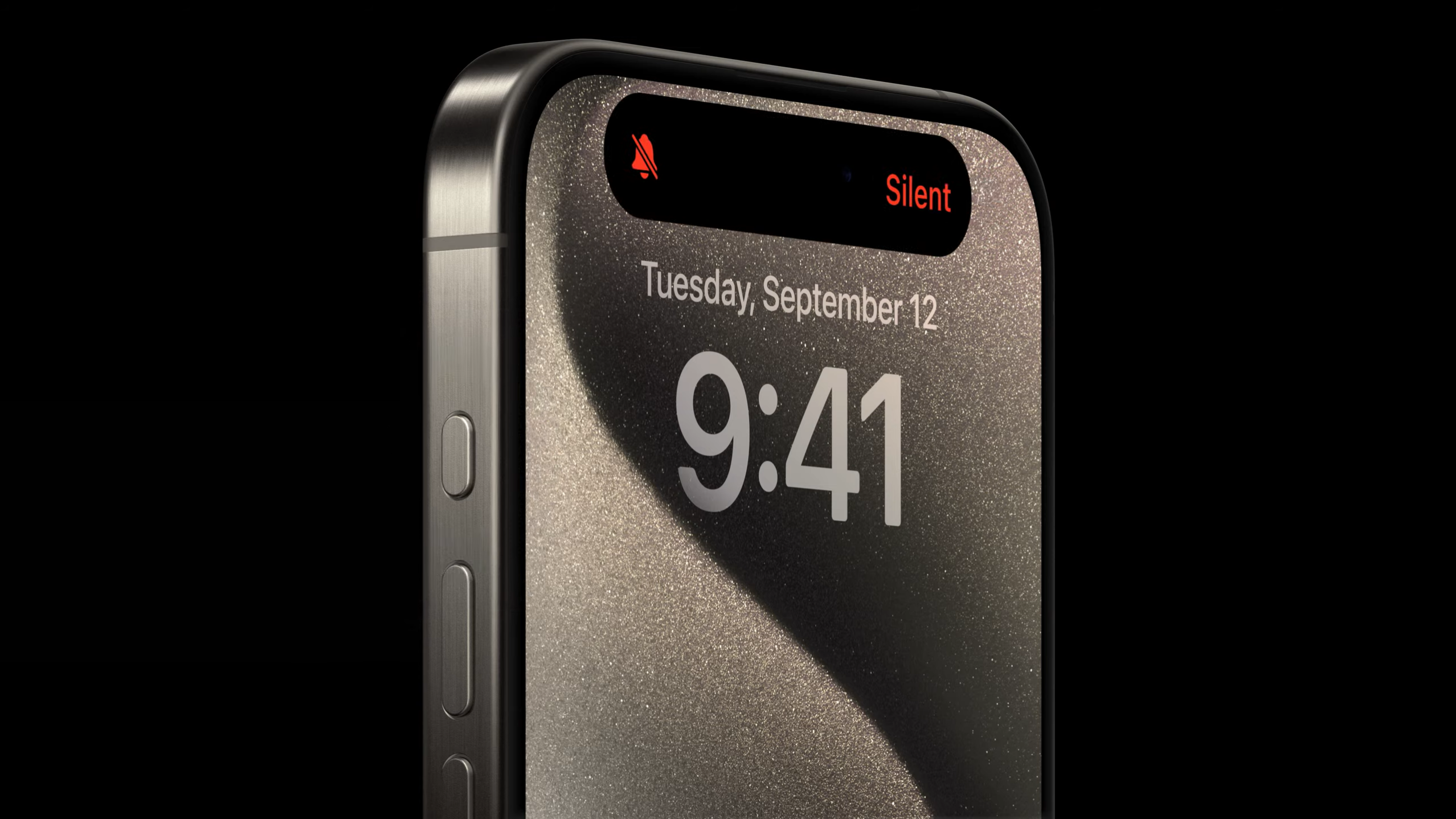
The most significant design changes, however, are more functional than aesthetic. The traditional, physical mute switch has been replaced by an all-new Action button on the iPhone 15 Pro, which Apple says can be configured to trigger all manner of useful actions (in a similar fashion to the Action button on the Apple Watch Ultra).
Every iPhone 15 model sports a USB-C port, too, which replaces Apple’s proprietary Lightning port. USB-C is the latest universal standard for the wired connection of smart devices – if you buy a smart device in 2023, be it one of the best Android phones, best laptops, or best smart speakers, it’ll likely feature a pill-shaped port to support USB-C charging and data transfer – and Apple's adoption of this technology makes the iPhone 15 Pro more compatible (read: practical) than its predecessors.
For instance, the iPhone 15 Pro’s Thunderbolt 3 version of USB-C makes the device compatible with 4K monitors, meaning you're be able to display certain types of content on a separate screen – as you can with the best iPads.
iPhone 15 Pro cameras
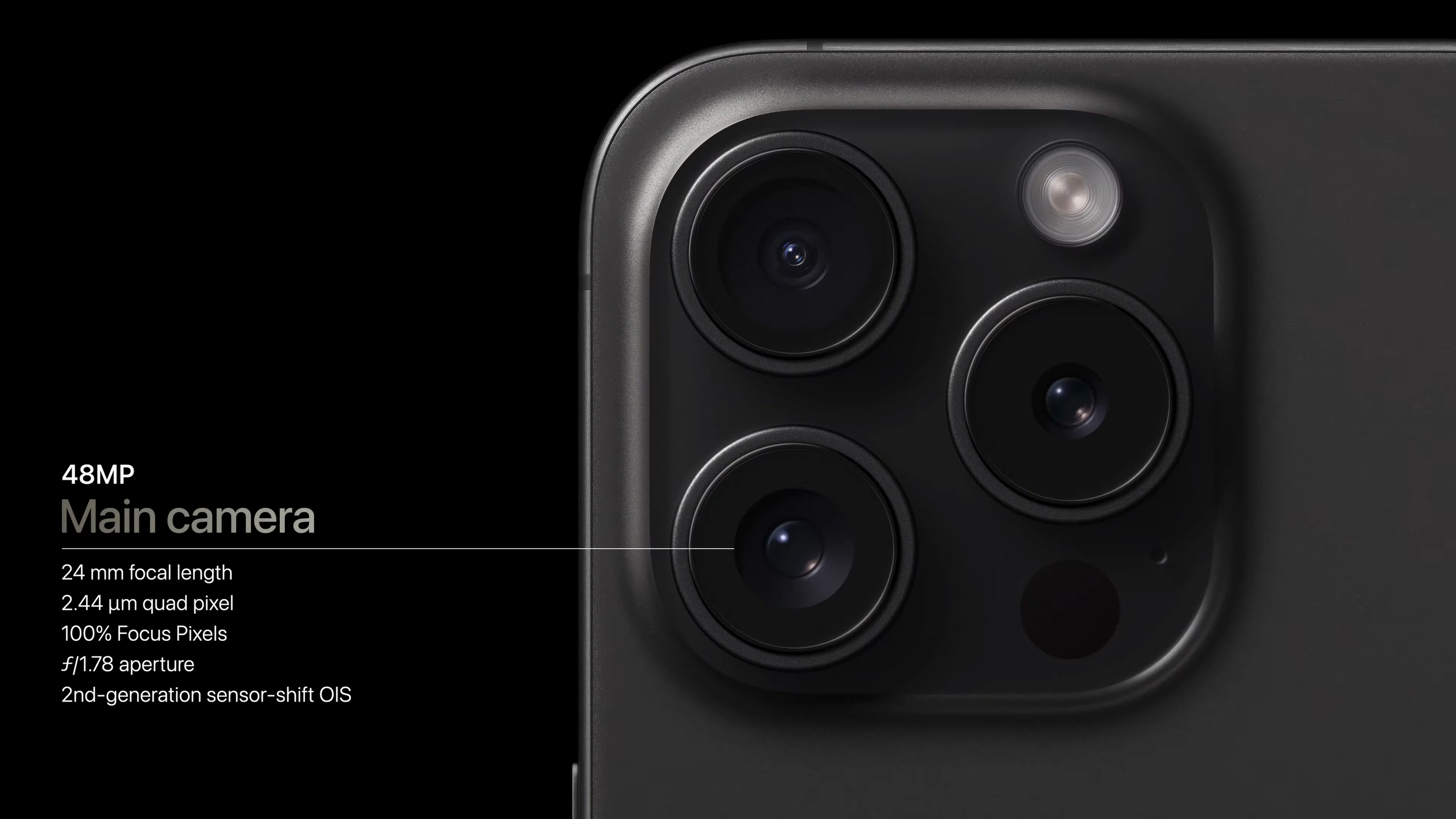
- Similar triple-lens setup to the iPhone 14 Pro
- Sensors have been improved
The iPhone 15 Pro doesn’t stray too far from its predecessor’s (admittedly excellent) triple-sensor setup. The phone boasts the following three lenses: a 48MP wide (24mm, f/1.78), a 12MP ultra-wide (13mm, f/2.2) and a 12MP telephoto (77mm f/2.8) with 3x zoom.
The key upgrade here is the addition of more focal lengths – Apple says "it’s like having seven pro lenses in your pocket" – though the phone's 48MP main camera has been updated, too, allowing you to capture super‑high‑resolution photos with even more detail and color.
Portrait mode has also been overhauled on the the iPhone 15 Pro; you no longer need to switch to Portrait mode manually. If your subject is a person, dog or cat, the phone automatically captures depth information, so you can choose to instantly see your photo as a portrait, with an artful blur effect, or later in the Photos app.
On the front, the iPhone 15 Pro boasts the same 12MP selfie snapper as its predecessor.
iPhone 15 Pro display
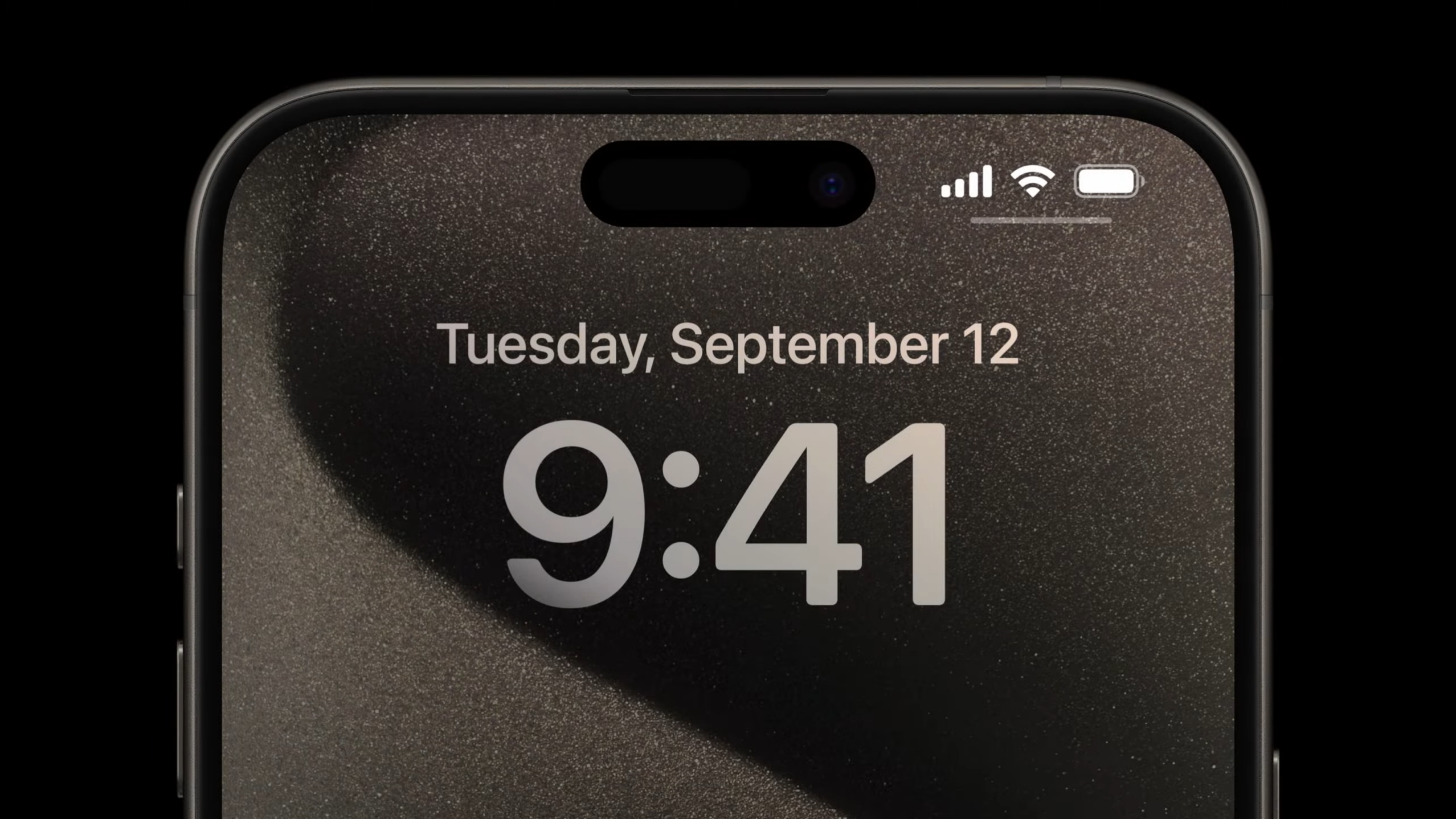
- Same 6.1-inch Super XDR OLED screen
The iPhone 15 Pro sticks with its predecessor’s excellent 6.1-inch Super XDR OLED screen, with Apple’s ProMotion technology – which varies the refresh rate between 10Hz and 120Hz, depending on the content displayed – returning, too.
As mentioned, the Dynamic Island digital cutout also returns – though this notch is now a feature of the iPhone 15 and iPhone 15 Plus, too – and the iPhone 15 Pro’s bezels are largely non-existent, which bodes well for Apple's ultimate dream of creating a totally bezel-less iPhone in the not-too-distant future.
In other words, this is indisputably one of the best phone displays on the market, and we're not fussed that Apple hasn’t messed with a winning formula here.
iPhone 15 Pro performance
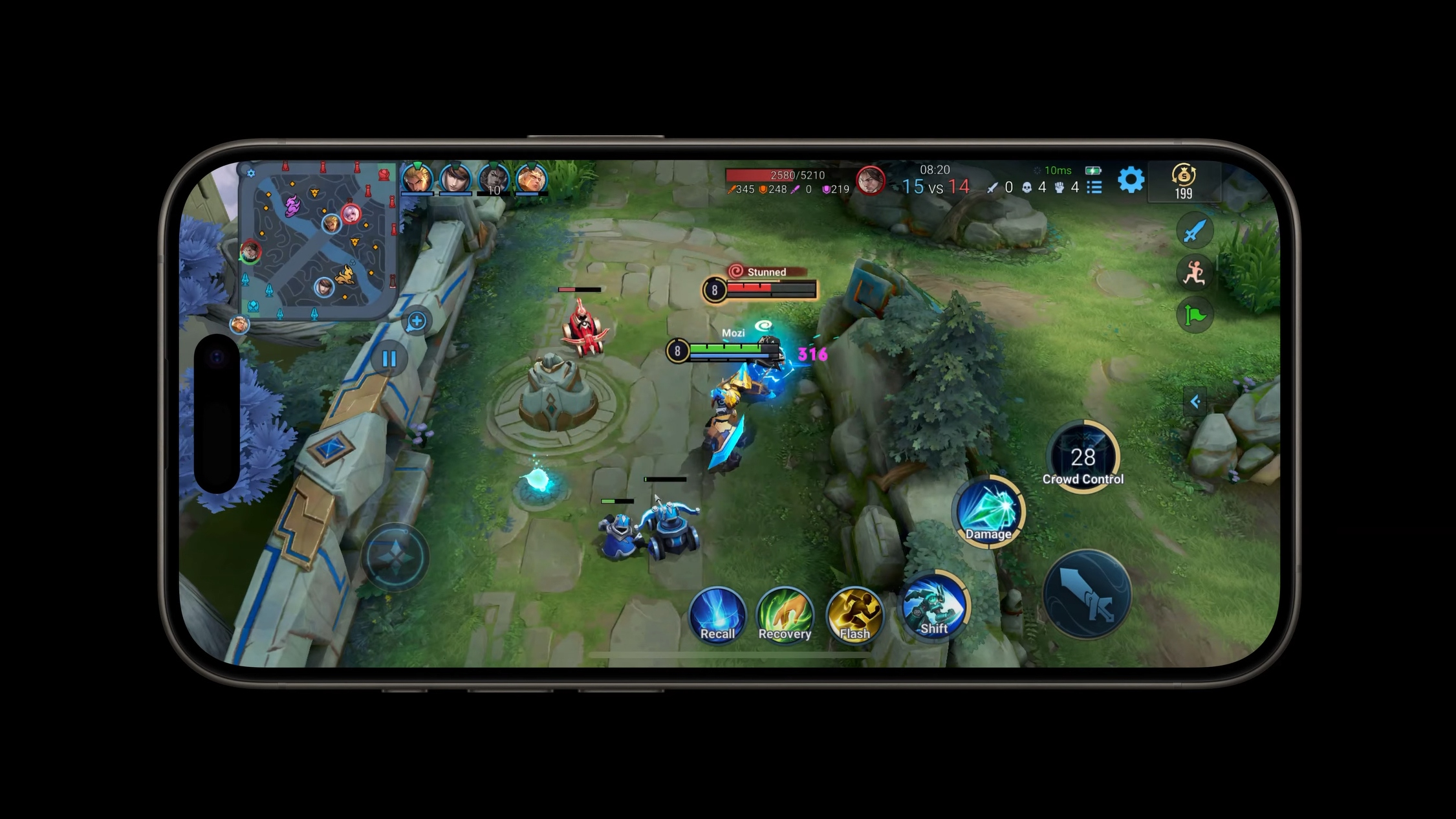
- Uses Apple's new superfast A17 Pro chipset
The iPhone 15 Pro is powered by the latest version of Apple’s silicon, the A17 Pro, which the company is describing as "a monster win for gaming" and "the biggest redesign in the history of Apple GPUs."
Built on a 3nm process, Apple's latest chipset boasts more transistors than its predecessor, the A16 Bionic, and is pretty much guaranteed to be the most powerful chipset on the mobile market right now (sorry, Samsung).
Indeed, some early benchmark listings for the iPhone 15 Pro see it surging ahead of the iPhone 14 Pro, and of every Android phone. The listing also mentions 8GB of RAM, which would be 2GB more than its predecessor has, though we can't take this as confirmed until someone has done a teardown of the phone.
Additionally, every iPhone 15 features an upgraded Ultra Wideband (UWB) chip to support the functionality of Apple's Vision Pro headset. Apple's U1 chip – currently built on a 16nm process – has been replaced by newer silicon in the iPhone 15 Pro, meaning location-based features like Find My, Precision Finding, and AirDrop will be more effective on the iPhone 15 Pro, too.
The iPhone 15 Pro also ships with iOS 17 installed as standard.
iPhone 15 Pro battery and charging
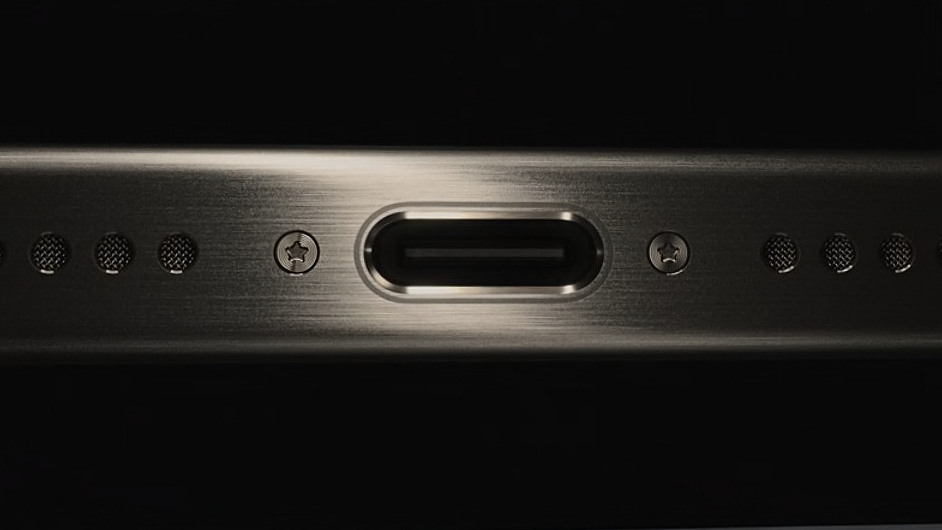
- All-day battery life
- USB-C port brings more charging options
Apple claims that you'll get up to 23 hrs hours of video playback from the iPhone 15 Pro, which is comparable to the battery life boasted by its predecessor. We found that claim to be largely accurate in our review testing.
The move to USB-C on the iPhone 15 Pro now means that you'll be able to charge your Mac or iPad with the same cable you use to charge your phone, and you can share charge between iPhone and AirPods, too. Incidentally, support for USB 3.6 on the iPhone 15 Pro also allows for faster data transfer speeds.
As for charging speeds, the iPhone 15 Pro can be juiced at up to 20W, and it also supports wireless charging (including the new Qi2 standard for wireless charging).
More iPhone 15 articles
- iPhone 15: everything you need to know
- iPhone 15 Plus: everything you need to know
- iPhone 15 Pro Max: everything you need to know
- iPhone 15 price: should you go for iPhone 14 instead?
- iPhone 15 deals: the best offers to look out for
- iPhone 15 USB-C: everything you need to know
- iPhone 15 Pro Max camera: 7 big upgrades
- 15 things we learned at Apple's September 2023 event

Axel is TechRadar's UK-based Phones Editor, reporting on everything from the latest Apple developments to newest AI breakthroughs as part of the site's Mobile Computing vertical. Having previously written for publications including Esquire and FourFourTwo, Axel is well-versed in the applications of technology beyond the desktop, and his coverage extends from general reporting and analysis to in-depth interviews and opinion. Axel studied for a degree in English Literature at the University of Warwick before joining TechRadar in 2020, where he then earned an NCTJ qualification as part of the company’s inaugural digital training scheme.